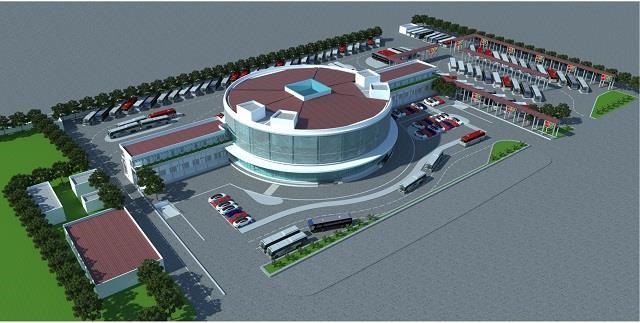 Society
Society

The recent decision of the Hà Nội People’s Committee to approve the construction of a new bus station on Belt Ring Road No.3 contradicts the city’s prior plans to remove bus stations from the inner city, transport experts say.
 |
| Artist’s impression of Yên Sở’s new bus station, planned for Belt Ring Road No.3 in Hoàng Mai District. – Photo kinhtedothi.vn |
HÀ NỘI — The recent decision of the Hà Nội People’s Committee to approve the construction of a new bus station on Belt Ring Road No.3 is contrary to the city’s prior plans to remove bus stations from the inner city, transport experts say.
The new bus station, to be called the Yên Sở station, will be built on Belt Ring Road No.3 near Yên Sở Park in Hoàng Mai District, reported online newspaper vietnamplus.vn.
Hà Nội plans to transform four major inter-provincial bus stations in the inner city, including Gia Lâm, Mỹ Đình, Giáp Bát and Nước Ngầm, into car parks and inner-city bus interchanges by 2020. The changes are part of the draft plan to improve parking lots, bus stations and bus interchanges by 2030. By moving the major inter-provincial bus stations outside of the central city, urban planners hope to reduce heavy traffic that currently ensnares commuters around the stations.
Gia Lâm and Giáp Bát bus stations are to be turned into parking lots by 2020 with Mỹ Đình and Nước Ngầm following five years later.
Notably, the Yên Sở station is just 1km away from the current Nước Ngầm bus station.
“Building Yên Sở bus station is contrary to the plan of moving bus stations out of the inner city. That plan should not be done by half”, said Nguyễn Văn Thanh, president of Việt Nam Auto Transport Association.
“The city might not attract private investment into the new stations in the outlying areas, as is the plan if Yên Sở station is built”, he said.
Funds to construct the bus station amount to VNĐ118 billion (US$5.1 million), of which investor’s capital is VNĐ30 billion (US$1.3 million), accounting for 25.4 per cent. The rest was loaned and mobilised from other sources.
The Yên Sở Station is to be built on an area of 3.2ha. It will be used for coaches and trucks during the coming transitional period as officials construct new bus stations outside of the city. Yên Sở station will have a capacity of 800-1,000 fixed-route coaches and 200 trucks daily.
Although it is meant to be a temporary station, the city has granted an operating license of 50 years.
Bùi Danh Liên, president of the Hà Nội Transport Association agreed with Thanh’s criticisms.
“Building Yên Sở station is illogical. It is too small to share the overload of Nước Ngầm station”, he said. “And removing the current stations which were operating well was non-sense”.
The ground clearance for Yên Sở bus station has not been completed due to protests by local residents.
Other transport experts also disagreed with the city’s plan to remove the current bus stations from the inner city.
The draft plan claims new bus stations in the Belt Road No.4 area are more convenient for passengers to travel inter-province routes and will help ease traffic congestion in the inner city.
“But that plan is contrary to trend in the world, especially in European countries, where they place key bus and metro stations in the inner city”, said Nguyễn Xuân Thủy, a transport expert and former of director of Transport Publishing House.
According to Thủy, building new bus stations on Belt Ring Road No.4, which is 10-20km from the inner city, would cause inconvenience and a higher cost of transport for passengers.
Moreover, traffic congestion would actually worsen if everyday thousands of bus riders are moving to and from the inner city and suburban areas.
“Removing the current bus stations from the city will cause losses of billions of đồng because the stations have already received much investment, never mind the cost of using the land to construct new stations”, Thủy told the paper.
The city’s weak urban and transport planning is contributing to its terrible traffic congestion at present, said Thủy. — VNS




